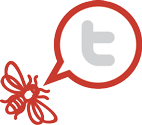Poster sessions are a challenging venue—often big crowds, people moving quickly, and fleeting opportunities to reel visitors in. And posters, relatively speaking, are a small space to summarize all of your work on a particular topic. But, this is the key—you CAN use your poster to engage people in your message. You can encourage them to talk with you more about your work. To do this, you have to think strategically.
Start with the end in mind
Know your objective. Your first instinct may be to try to distill an existing paper or begin outlining your methods, analysis, results, conclusions, etc. Stop! A poster is not a mini-paper. It is an opportunity to engage a certain group of colleagues in a discussion about your research. Forget about what will actually go up on the poster for a minute. Think ahead to the poster session itself. What do you hope to achieve? Are you seeking feedback on your findings? Are you looking for help identifying your next research question? Are you hoping to find a new collaborator? When the session is over, what will success look like for you?
Make sense of the environment
Poster sessions are often held in huge, cavernous ballrooms or convention centers. There are lots of posters and often poor lighting. There are lots of people—some with food or drink in hand—ambling by each poster. They have limited time, and they are judging whether they want to stop and spend a few minutes learning more. You are competing for their attention. These and other environmental factors are critical to gauge—again before you start designing your poster.
Be clear about your audience
Related to your objective, who exactly do you want to engage? Who is likely to be at the session to begin with? Will they know anything about your work? Will they find it challenging? Is it an interdisciplinary group? Understanding who you want to communicate with will help you make important decisions about which aspects of your research you should focus on in your poster and which elements can be placed on a handout or be left for another time.
Now that you have a strategy for your poster session, you can think about your message. What will you say to this audience in the service of your objective? To learn about messaging, click here.

